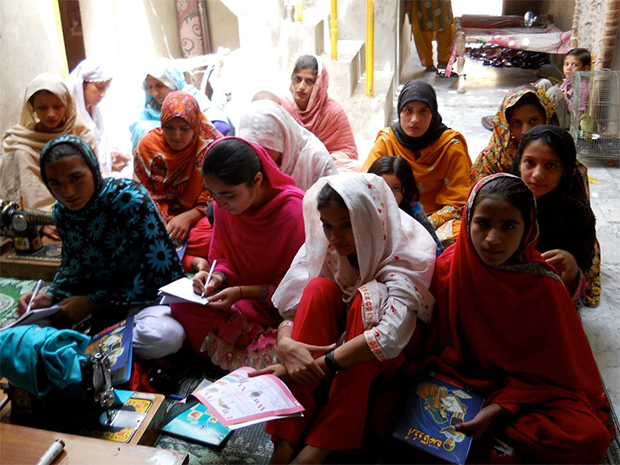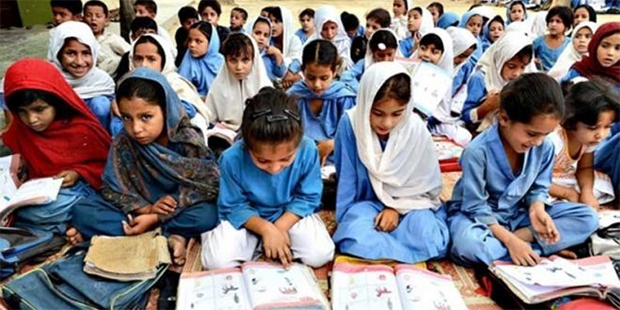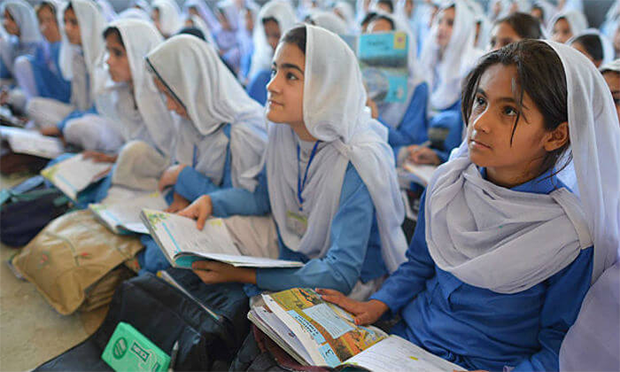|
Pakistan has one of the lowest
literacy rates in the world. The picture of educational conditions is grim in
Pakistan. More than 40 percent of girls never enroll in school. “The situation
is especially alarming in rural areas due to social and cultural Obstacle.
More specifically in KPK and Baluchistan women are severely bound by cultural
constraints and prejudices. They are involved in productive, reproductive and
community work for 14-18 hours, in these areas the female literacy rate stands
between 15 per cent and 25 per cent. a day as well as in northern tribal areas
the education of girls is strictly prohibited on religious grounds. Those girls
who go schools their attendance rates in primary, secondary, and postsecondary
schools are lower than boys.”This is a gross misinterpretation of Islam.
|
|
 |
|
Pakistan is a Muslim’s country; the dominant religion is Islam about 96
per cent of the population is Muslim, which like all religions urges men and
women to acquire education. In Islam, it is clearly mention that it is
obligatory for every man and woman to receive quality education. This clearly
states that women should receive education.
There are several issues and causes of education problems for girl children in
Pakistan
Problems of Access to Education: Inaccessibility of primary education is
a result of distance, child labor, male preference, scarcity of teachers, local
leaders’ fear of loosing power and frequent policy changes. The problem of
access applies to both girls and boys; however it is more serious for girls.
Girl’s schools are far away from their homes in many rural areas, Girl child
because culturally they are supposed to stay close to home and they cannot
travel alone in our society freely, many families cannot afford traveling
expenses for their children. Those who can afford transport it is often not
available in rural and backward areas. Moreover, teachers that do not belong to
the same community are sometimes unable to attend school daily because of
above-mentioned problems.
Problems of Separate Schools:
In our society coeducation is not accepted even in primary schools. Family and
parents don't allow their girls to study in coeducation schools due to several
reasons. The government often failed to take measures to provide separate school
and classrooms for girls.
Child labor: Children often do not attend school because they are working
to support their families for their survival. Million of children under the age
of 14 are laborers at brick kiln factories, the carpet weaving industry,
agriculture, small industries and domestic services across Pakistan.
|
|

|
|
Male preference: Parents favor the education of their sons over their daughters.
Whenever there is a tradeoff between boys and girls for sending school; parents
prefer to expend on boys education as they are they future earning hands of
their families. Typically, education of a boy is desirable even for the most
disadvantaged people and those who live beyond the designated settled areas.
However, education of a girl is not necessarily desirable because any investment
made would not bear fruit for their family since girls leave to live with the
family of their husband.
Fear of extremists:
In Pakistan, particularly in the KPK militant group have blasted thousand of
schools, especially girl schools, thousand of student have lost their lives
during studying. Extremist groups are against girls and women education as well
as they have given threats and threatening letters to several Governments and
private girl schools for stopping girl education. Women are not allowed to step
out of their houses. If they are allowed to go out they have to be covered in
heavy burqas from head to toe. In short, women, which are 51 percent on the
country’s population, have been forced to just bear children for their husbands
and remain within their houses for cooking and cleaning.
Fear of losing power: local landlords oppose girls’ education out of fear
of losing power. Whenever the Government and non-government take steps to open
formal and informal schools in rural and backward areas where they rule, the
landlords oppose such measures, apparently out of fear that people who become
literate will cease to follow them with blind faith. In this condition
unfortunately, the government has not so far taken any steps to promote literacy
or girls education in these areas. It is even reluctant to help NGOs or other
small political or religious parties do the job, because in order to maintain
control, it needs the support of these landlords and chieftains who, as members
of the political parties, are regularly elected to the national assembly.
|
|
 |
Frequent changes in education policies: Our governments have announced
different plans and policies to promote literacy, especially among women, as
Governments have announced various programs to achieve its educational
objectives but they have been unable to translate their words into action
because of various social, cultural, economic and political obstacles.
Solution of Above Problem:
Change of mind of leaders and local landlords
Change the policies of education
Bring change in local level through awareness and practical action
Equal access of education male and female
|